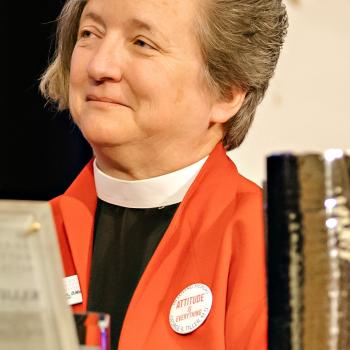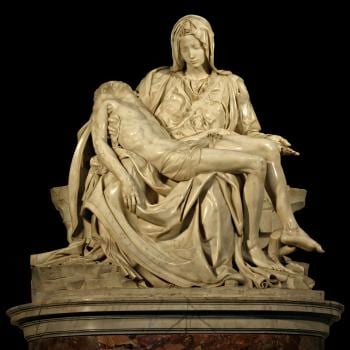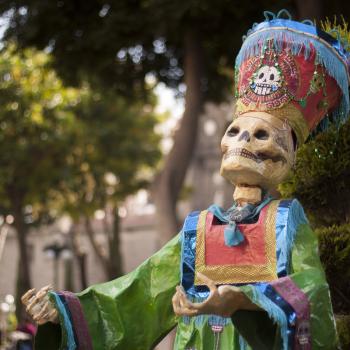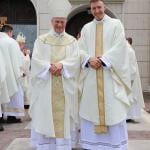The ecumenism from the Vatican II era sought to accomodate Protestantism. It was fuelled by two potent ideas that drove the Vatican II reforms: resourcessement and aggiornomento. The first was a return to the sources of the early church. This was done through shared scholarship with both Catholic and Protestant scholars. The second word means ‘open-ness’ and was the Catholic desire to be not so entrenched and negative, but to be open to other Christians, open to other religions, open to secular learning and open to the world. It was hoped that by returning together to the earliest sources of Christianity we would meet one another, go forward together and unity would be achieved. This was the hope, for instance, as Pope Paul VI met with Archbishop Ramsay of Canterbury.
These two concepts drove much of what has happened in the Catholic Church over the last forty years. Much that is positive has been accomplished. However, the positive fruit of these two concepts has now ripened and is about to be harvested. The thing is, the fruit looks very different from the seed which was planted.
Ecumenism with the mainstream Protestant churches is now just about finished. Sadly, churches like the Anglican and mainstream Methodist, Presbyterian and Lutheran have departed so far from historic Christianity that any hope of real union with ‘the big old One’ is unrealistic. It remains for the Catholic Church to continue to strive for union with the other historic churches of Christendom, as well as the remnant of orthodox Christians who desire union with the historic Church. These remants are most likely to exist within the various breakaway groups from the mainstream Protestant churches.
To do this Benedict XVI has taken ecumenism in a new direction. His driving idea is not resourcessement or aggiornomento, but the ‘hermeneutic of continuity.’ This is the concept that the Church today is the product of the past, and that we can only go creatively into the future together as we affirm all that is good and true from the tradition of the last 2000 years. This is what will unite the Eastern Orthodox, with one another and with Rome.
To do this, I believe we will see an expansion of the model of unity already enjoyed by the Eastern Rite Catholic Churches. I think groups will be formed which will retain their distinctive traditions, liturgies, discipline on married clergy, and even their own jurisdictions. These groups may be Eastern Orthodox, Anglican or even Lutheran. To achieve this unity they will have to agree to the disctinctive Catholic doctrines, and normalize marital situations among their people. This will still require great sacrifice and hard work, but I believe the Catholic Church under the leadership of Benedict will strive to make this possible. This is one of the reasons, by the way, that the Anglican Use conference in Texas this month is an important signpost.
If so, this is what will bring in traditionalist Catholics and whatever Anglicans wish to be true to the historic faith. The hermeneutic of continuity emphasizes all that is truly Catholic and true, while downplaying or even repudiating all that is an untrue innovation, all that is schismatic, or heretical.
The most difficult to reconcile will be Evangelical Protestants and sectarian charismatics. While admirably holding to a historical and Biblical faith with great enthusiasm and dynamism, their own Protestant assumptions and philosophical foundations will make it difficult for visible unity with the historic church to be accomplished. With them Catholics will have to continue to acknowledge a shared baptism and faith in Jesus Christ, and work together with them as much as possible as separated brethren.











